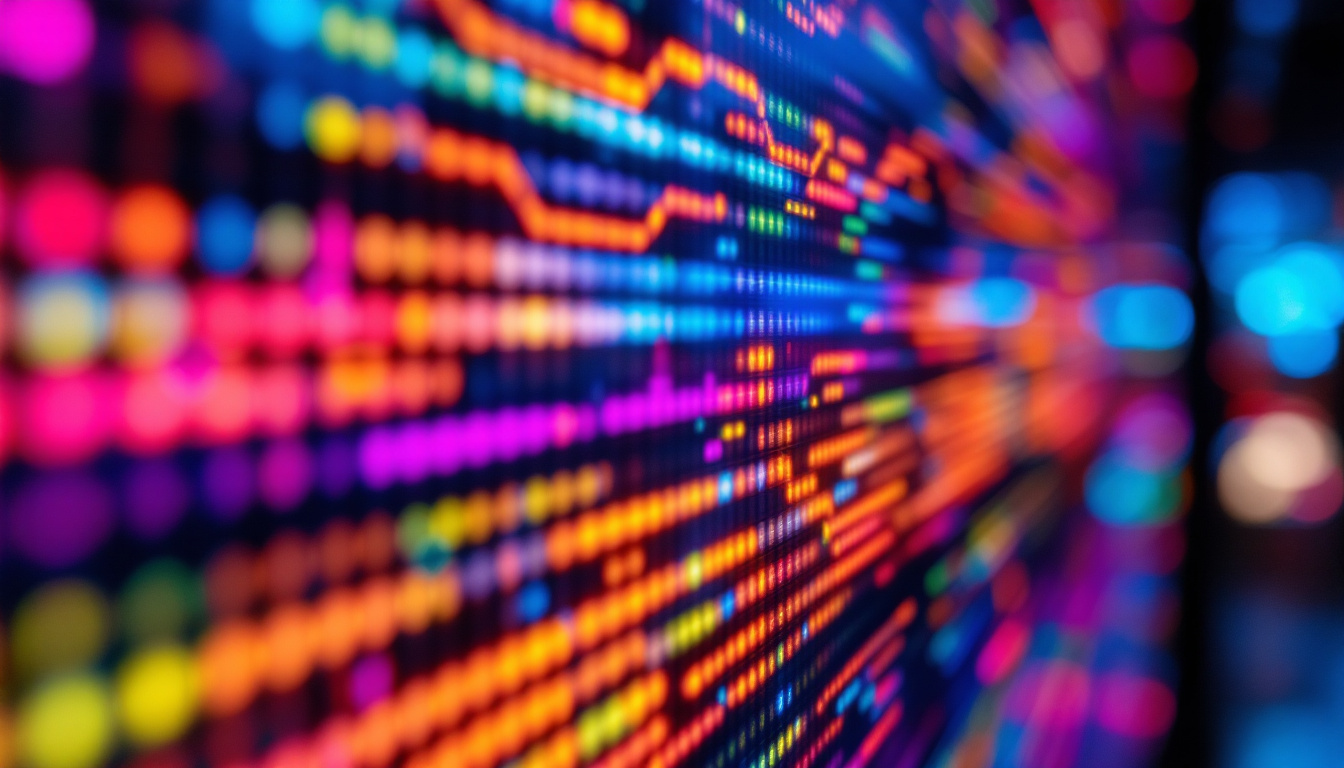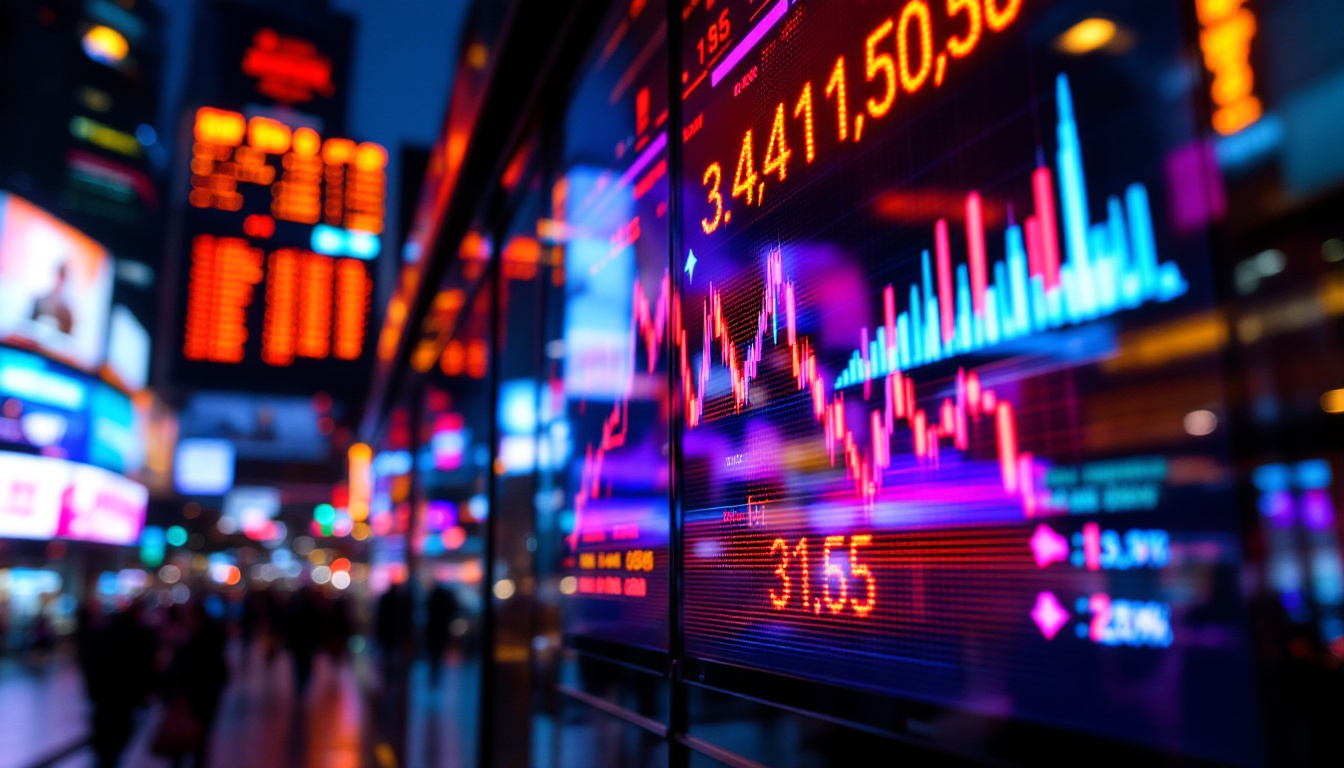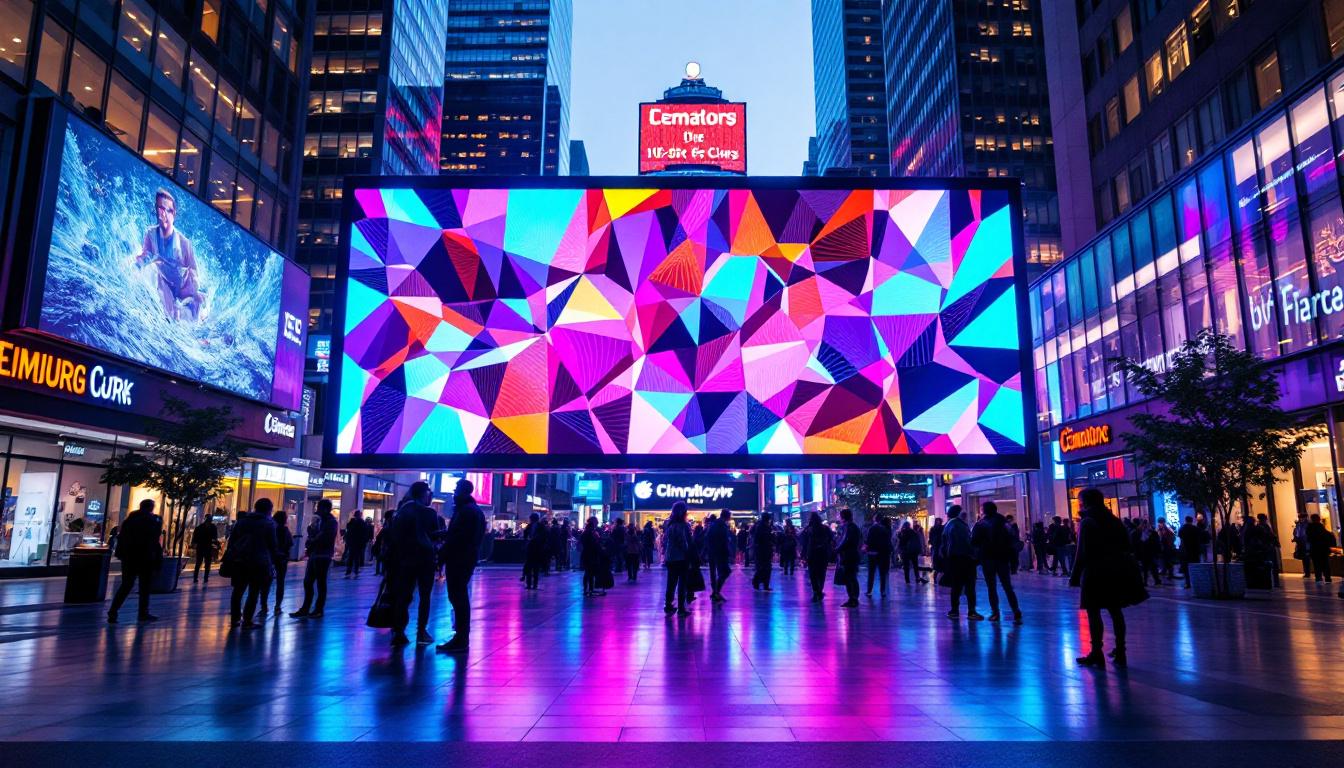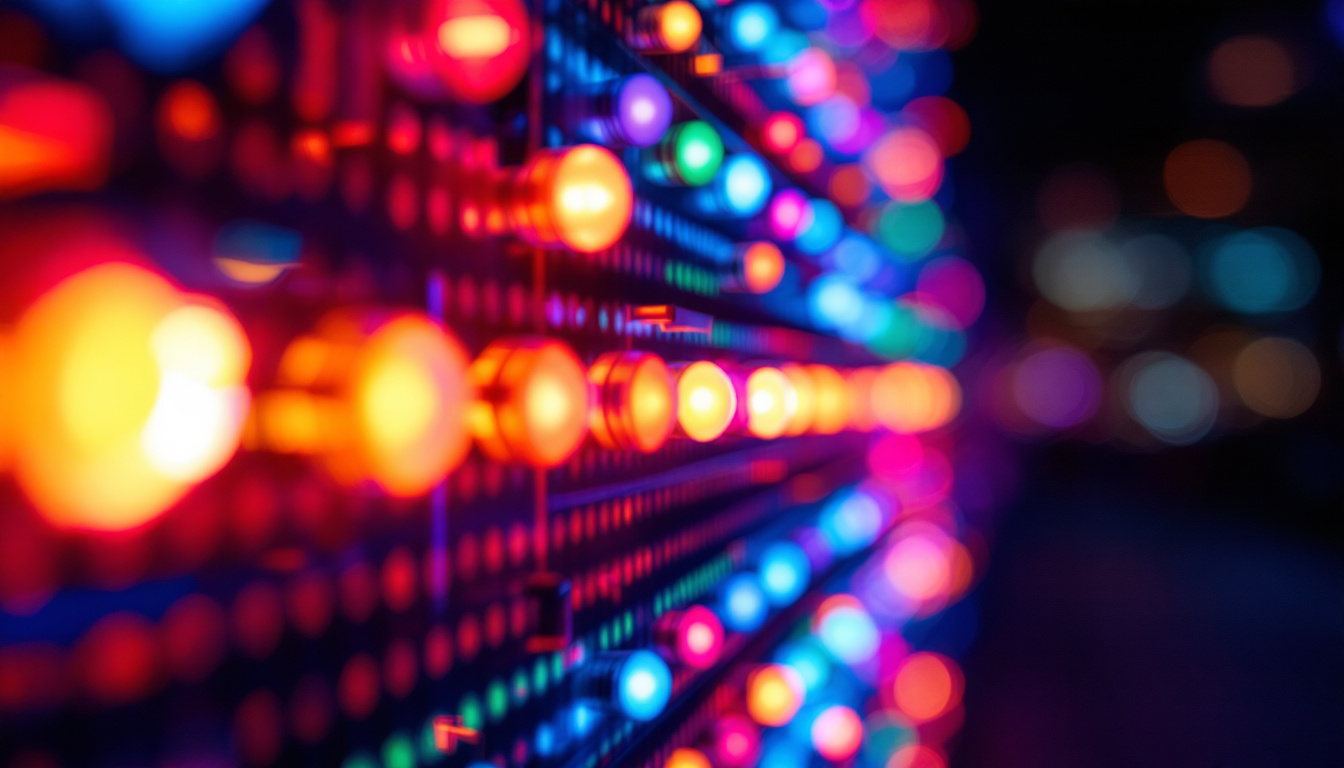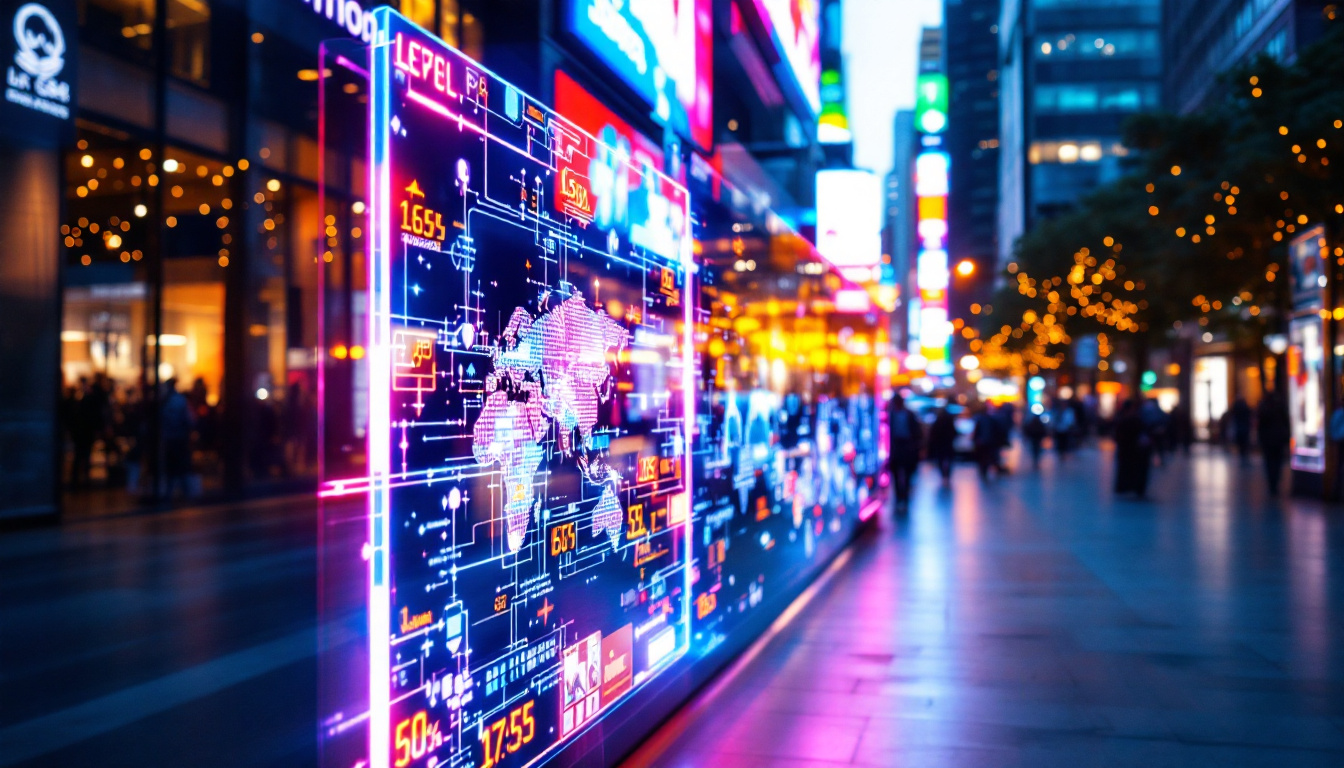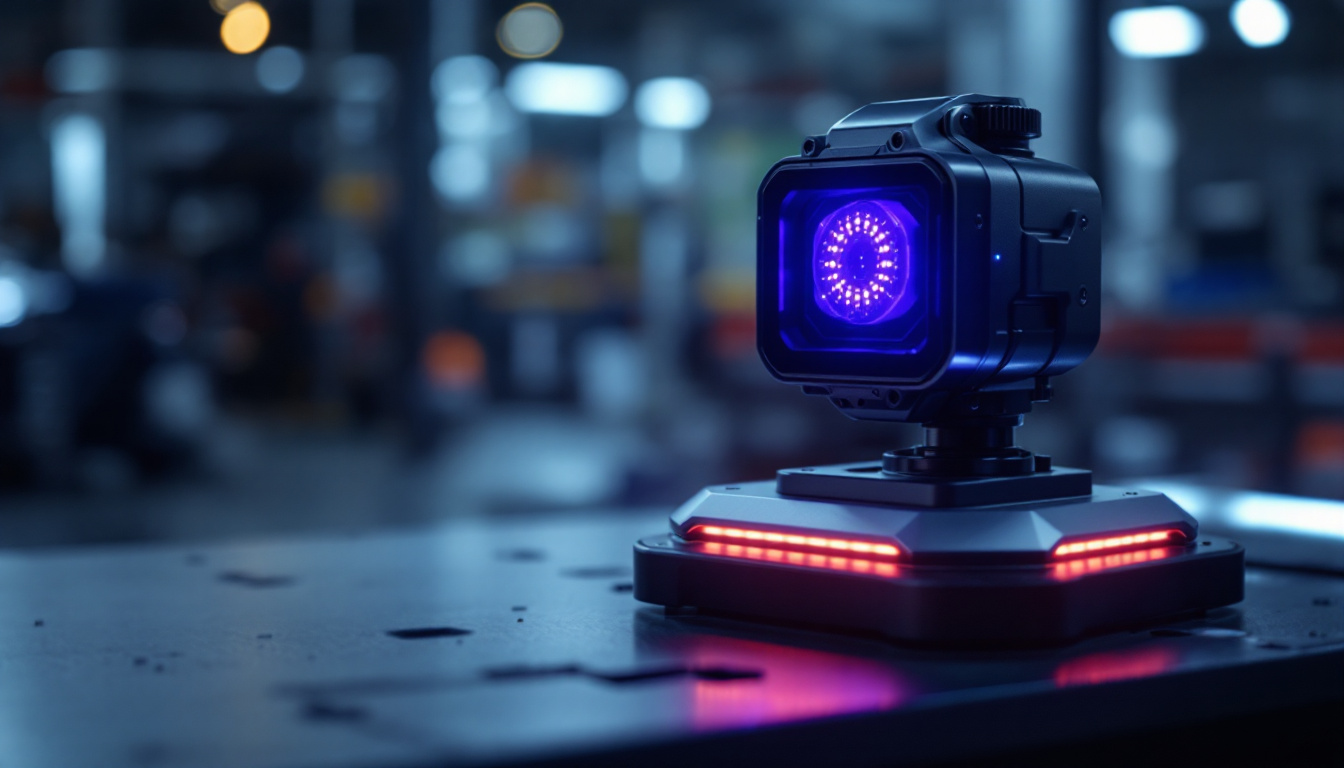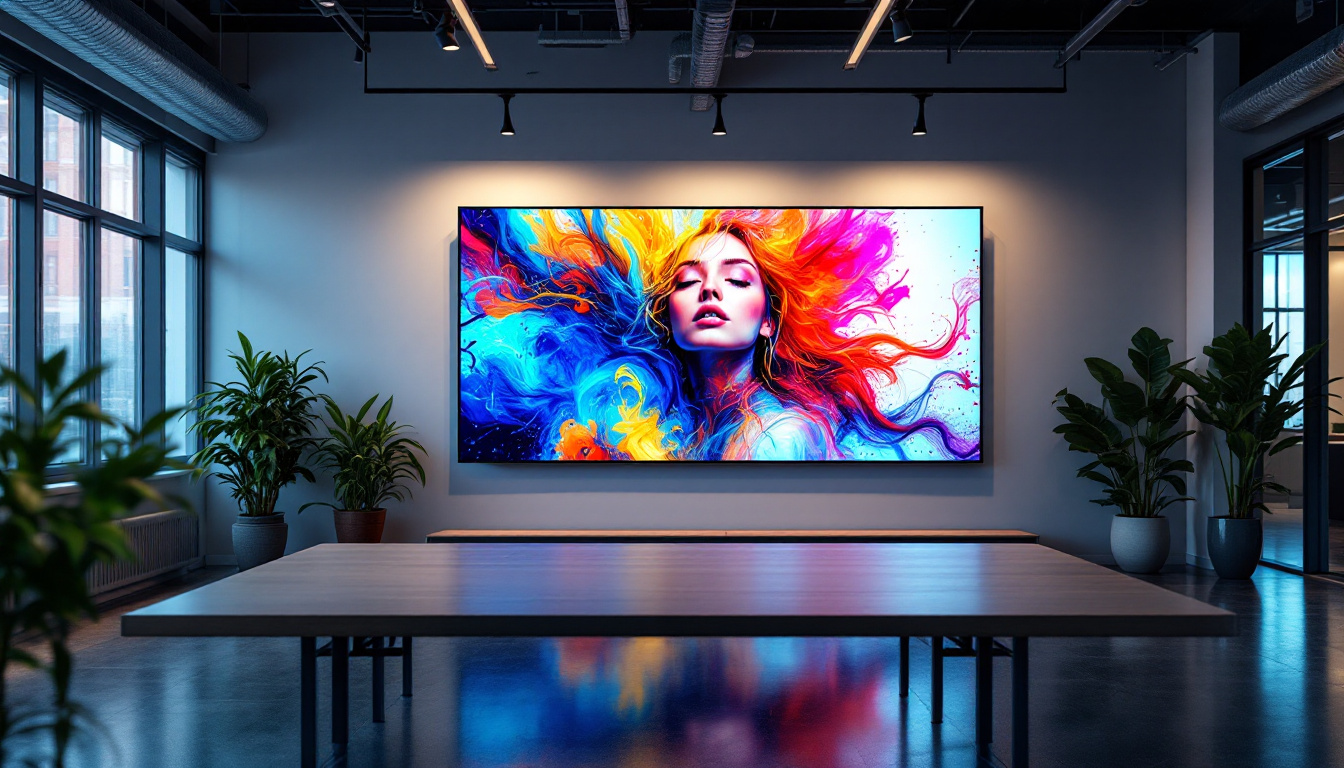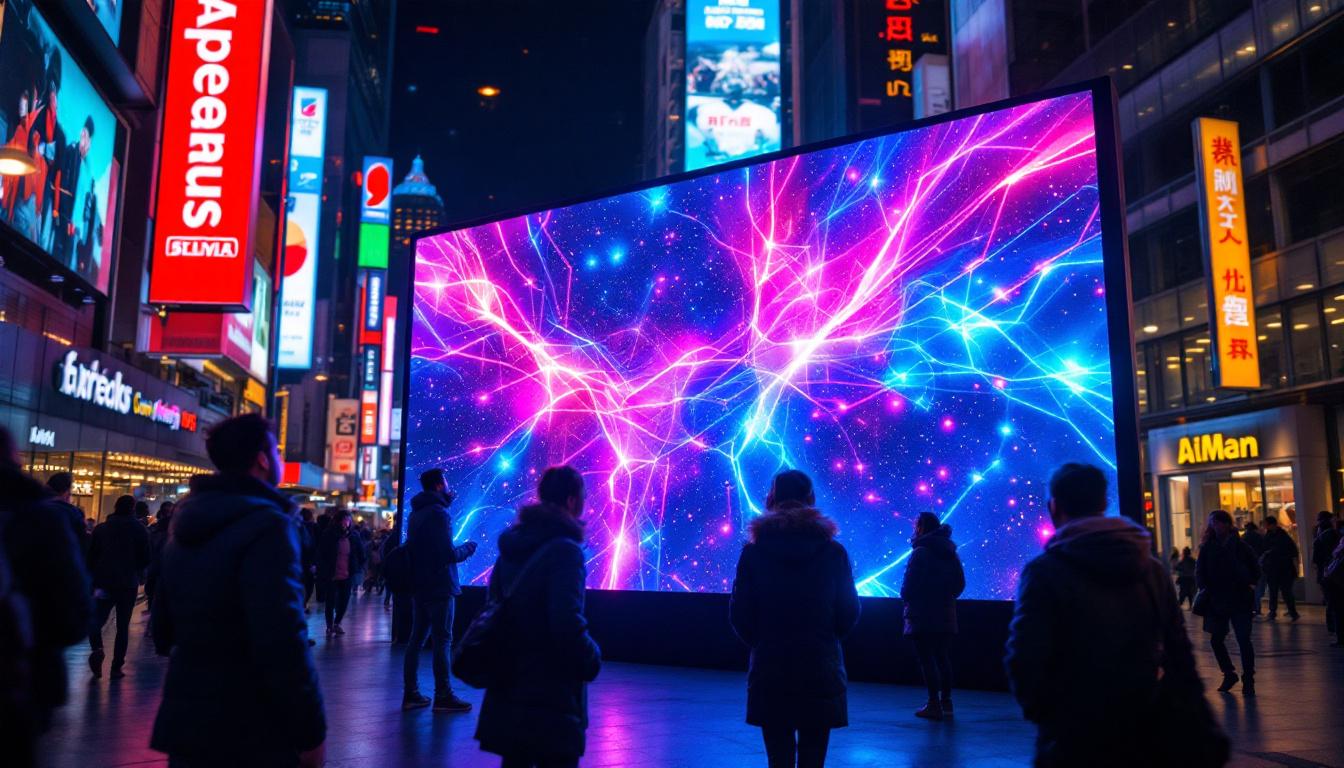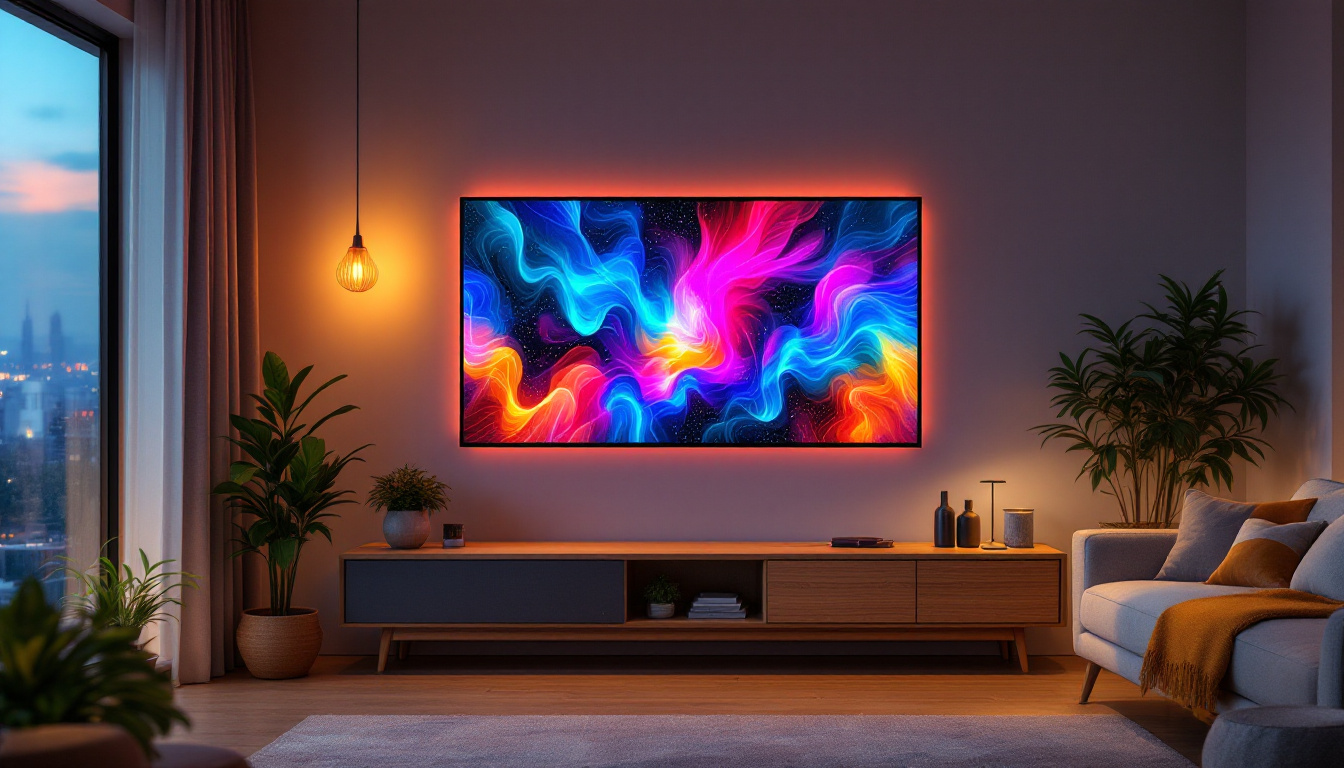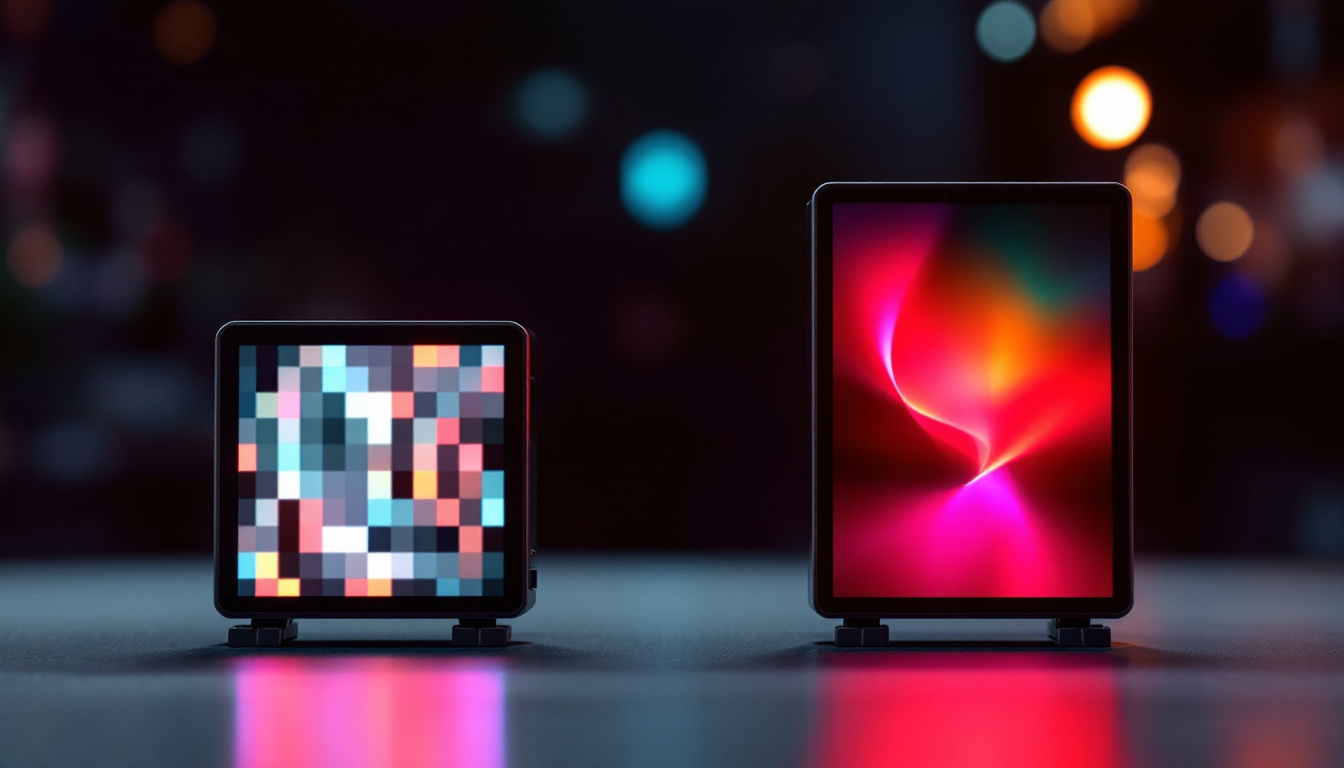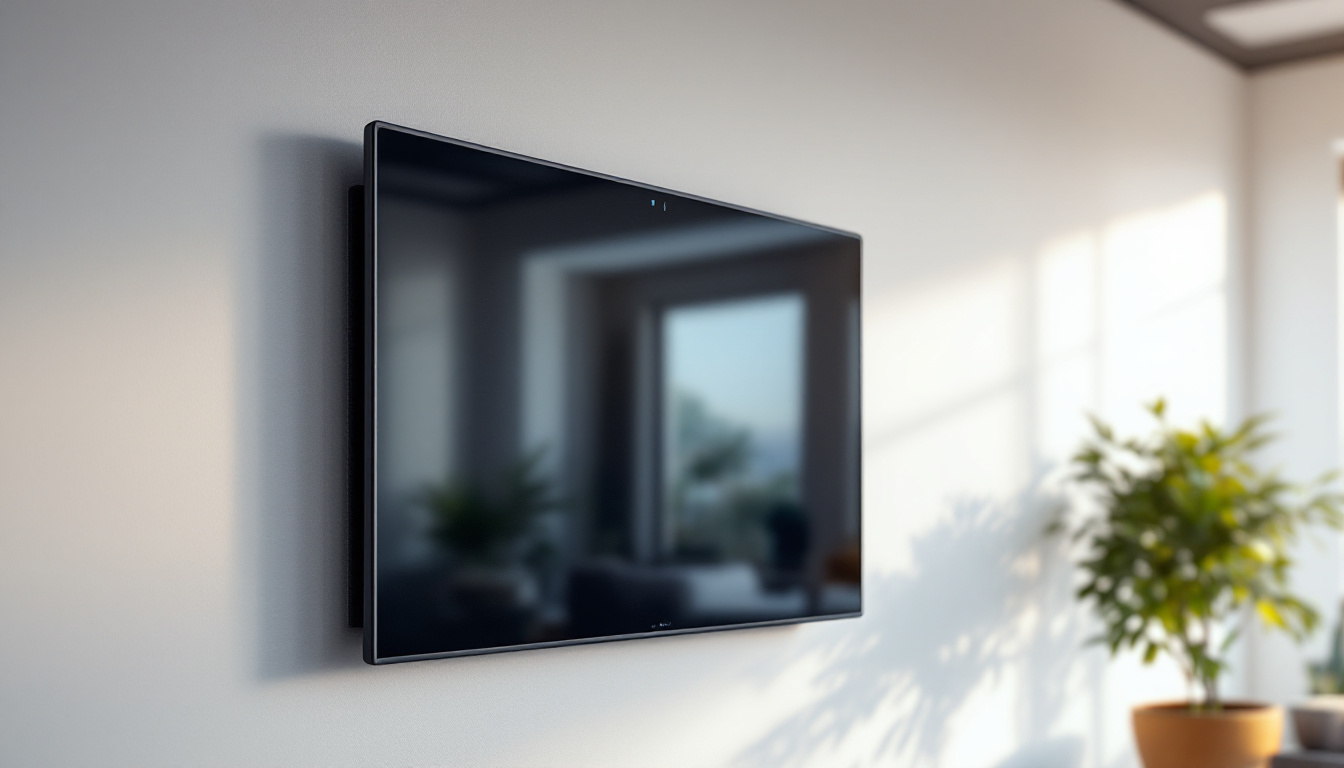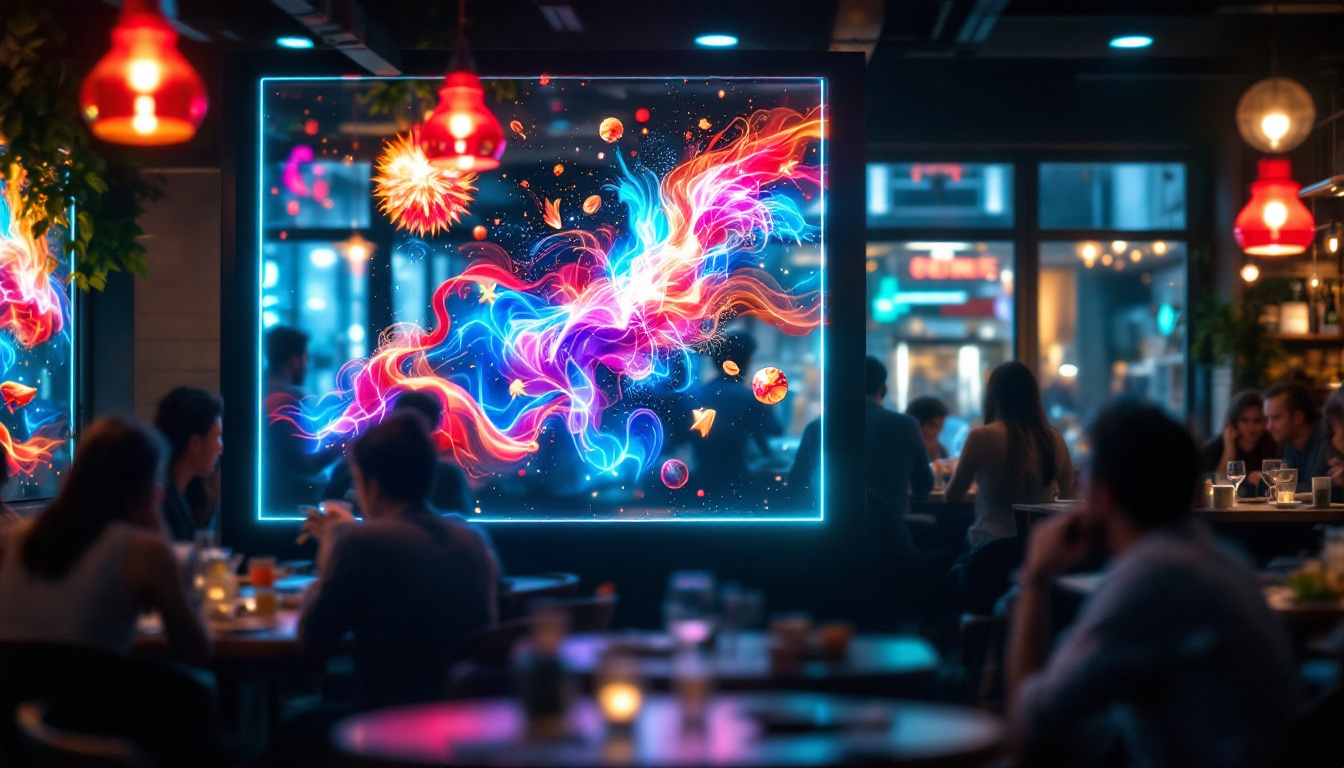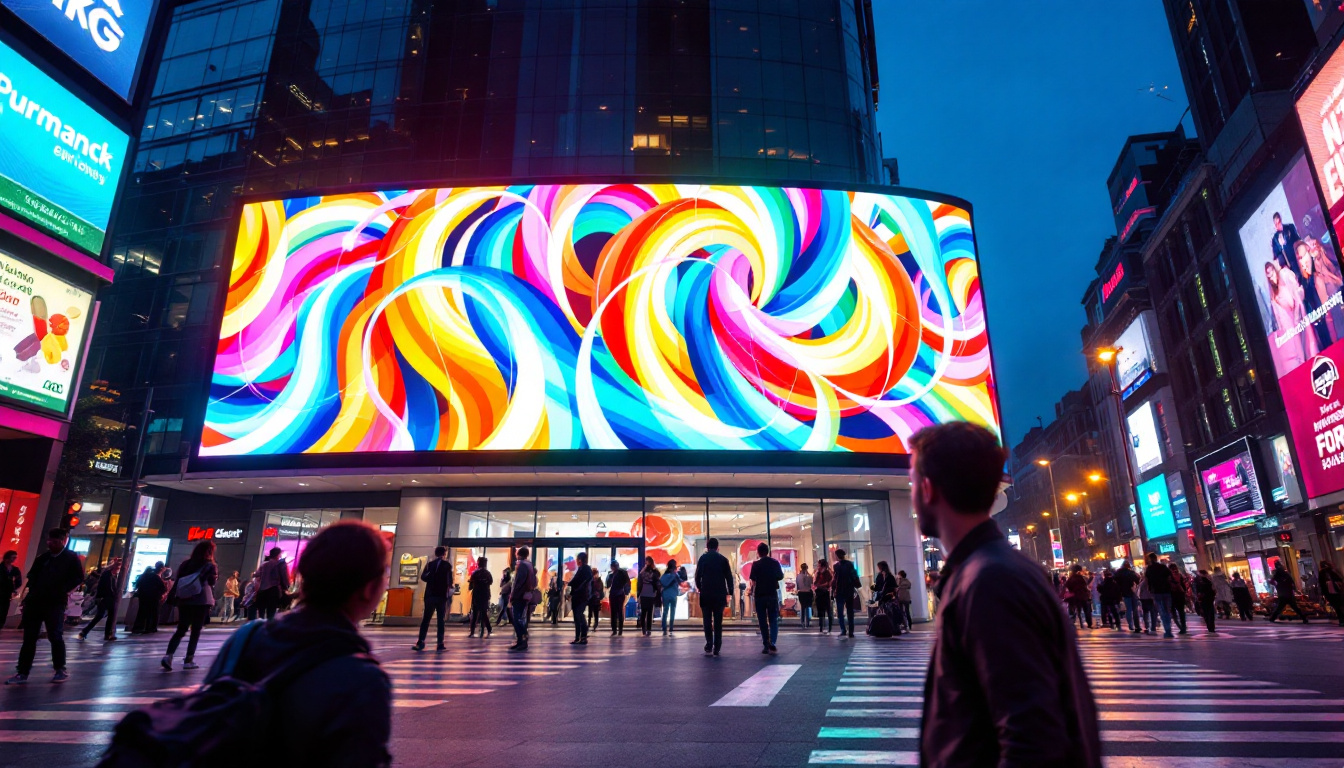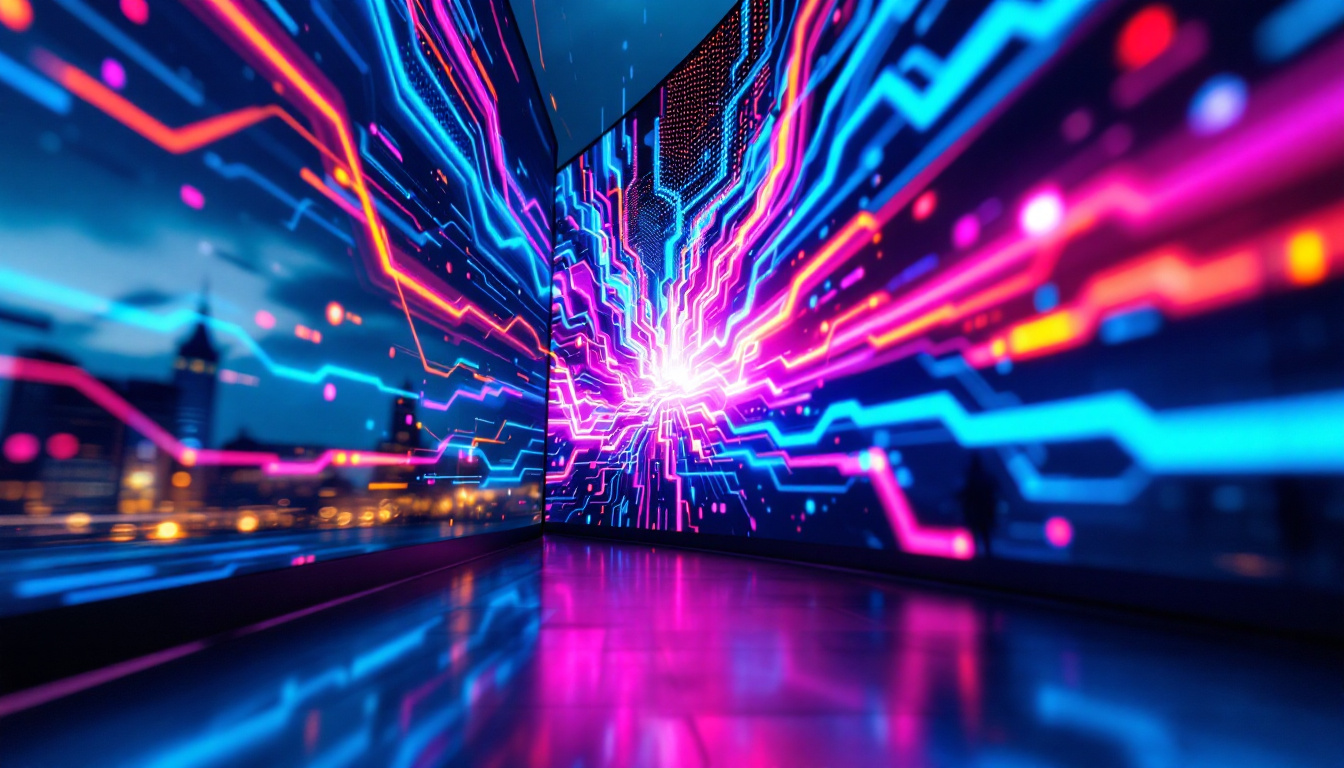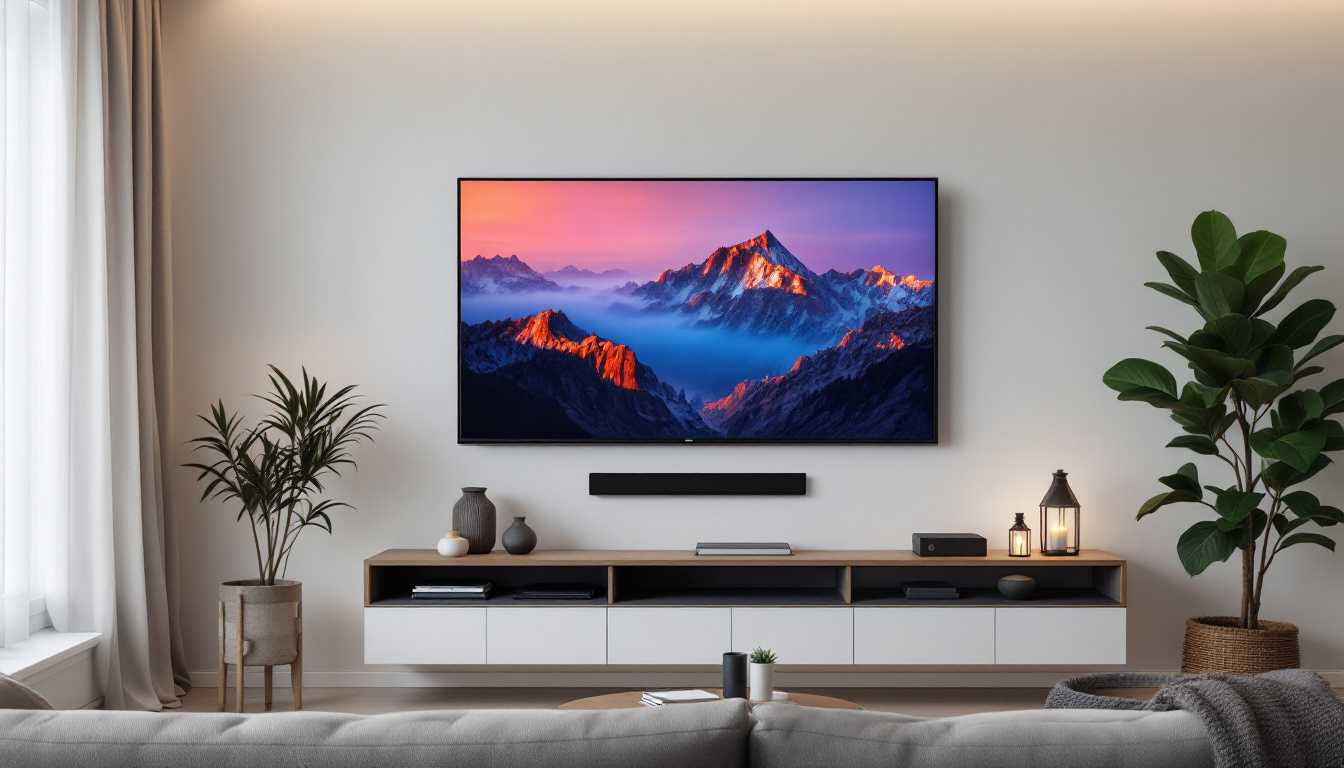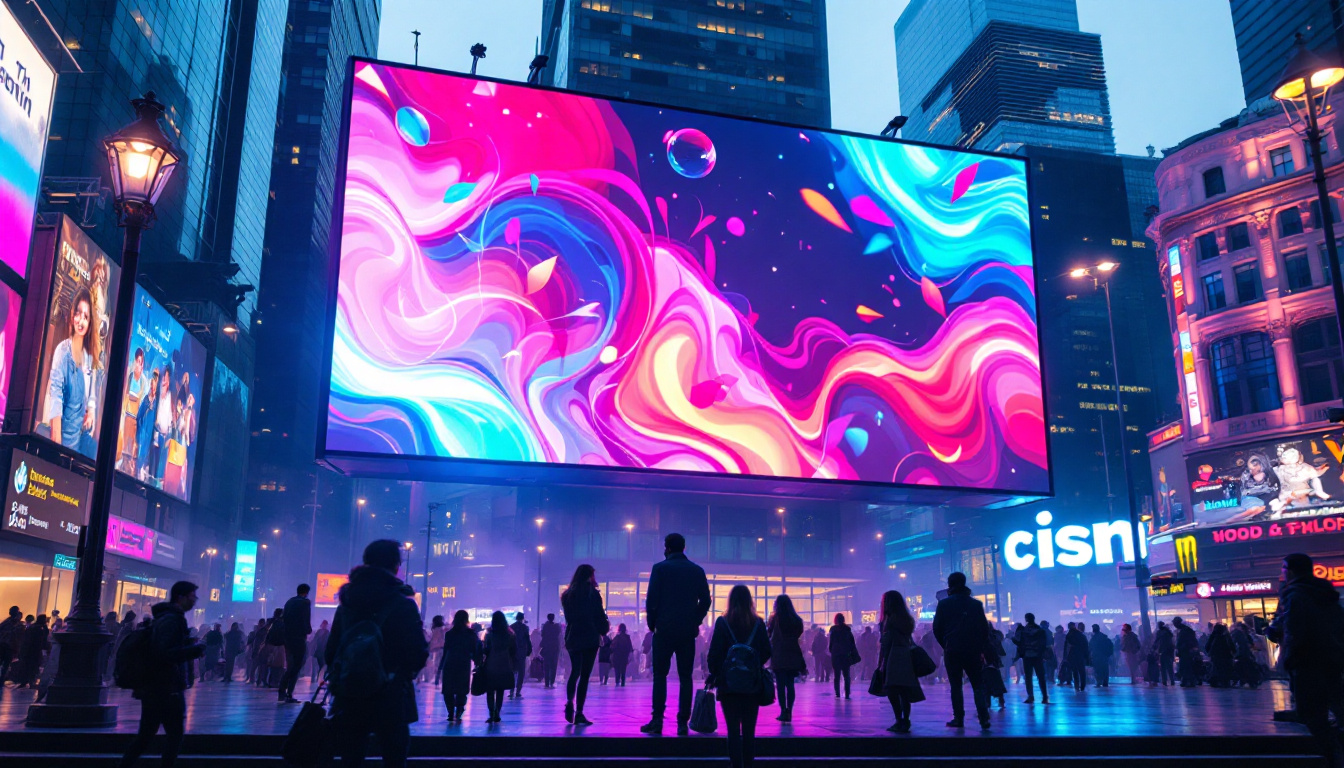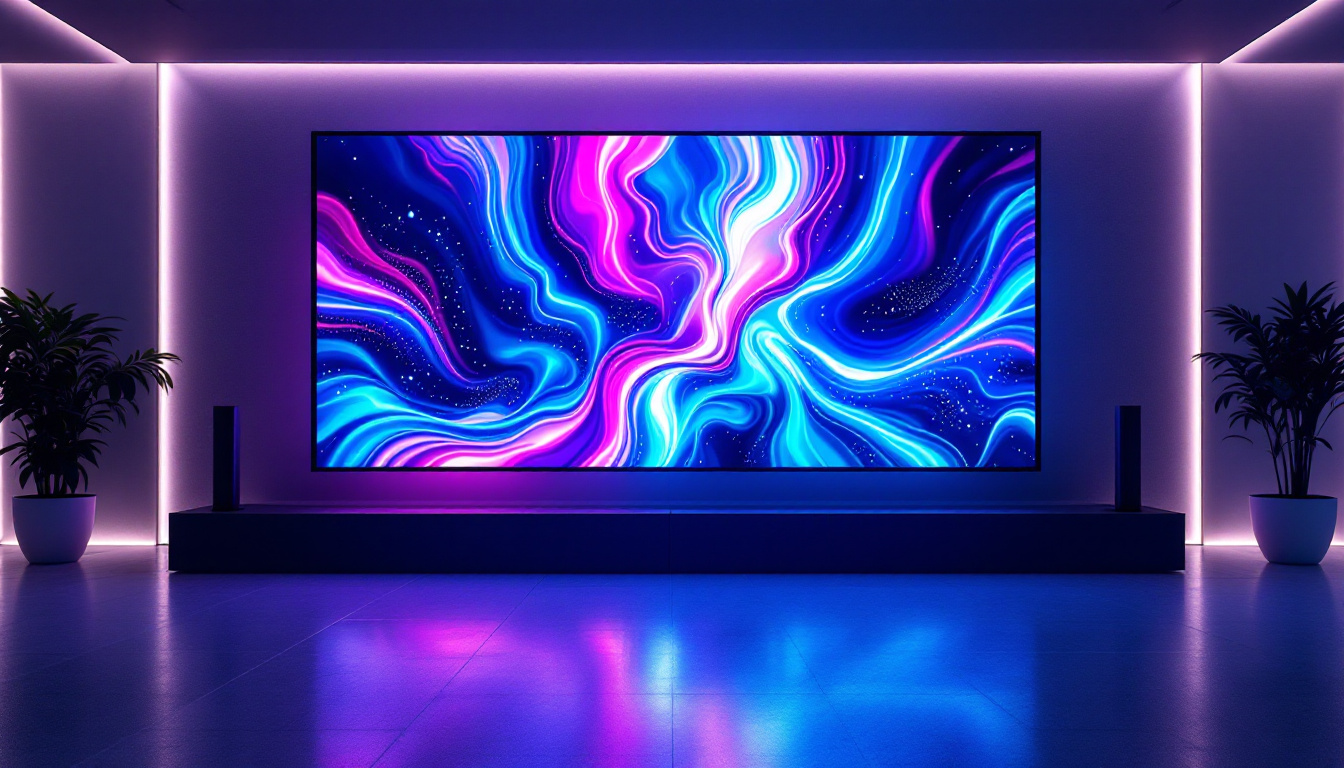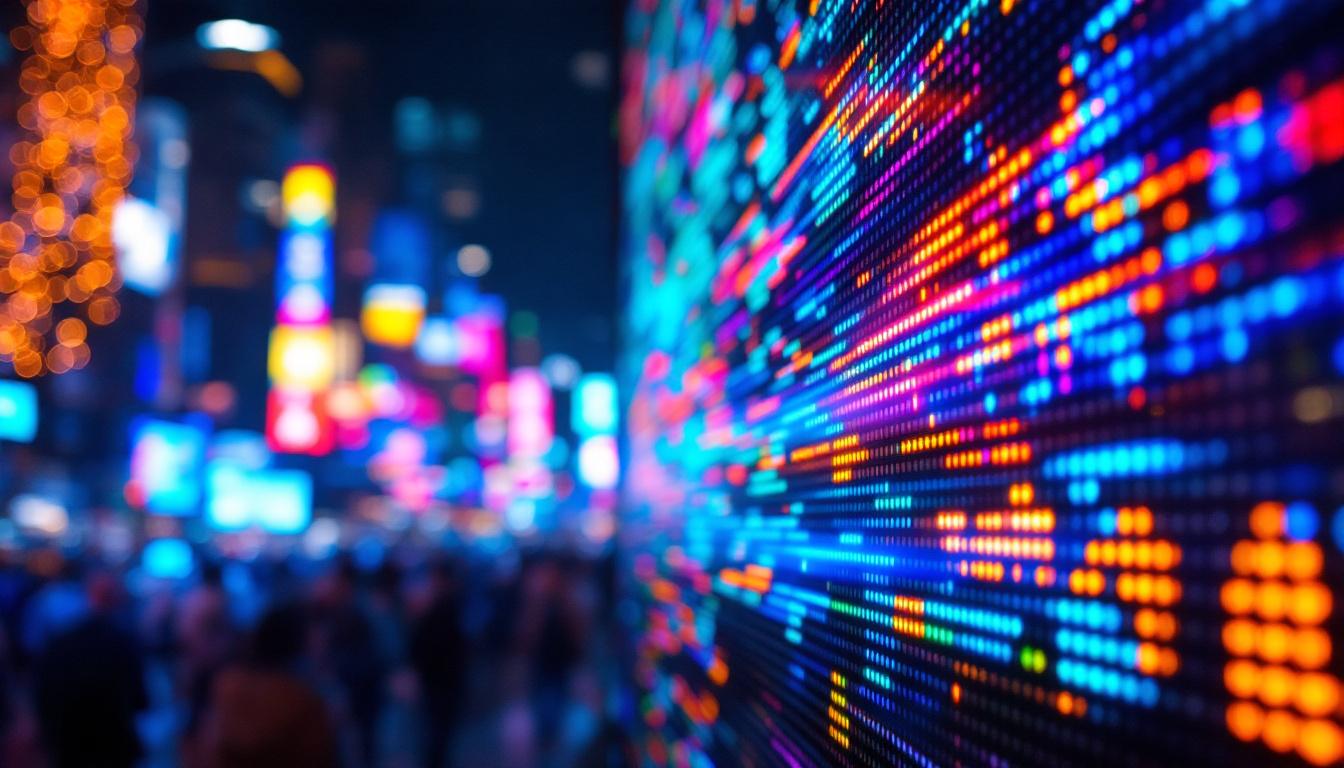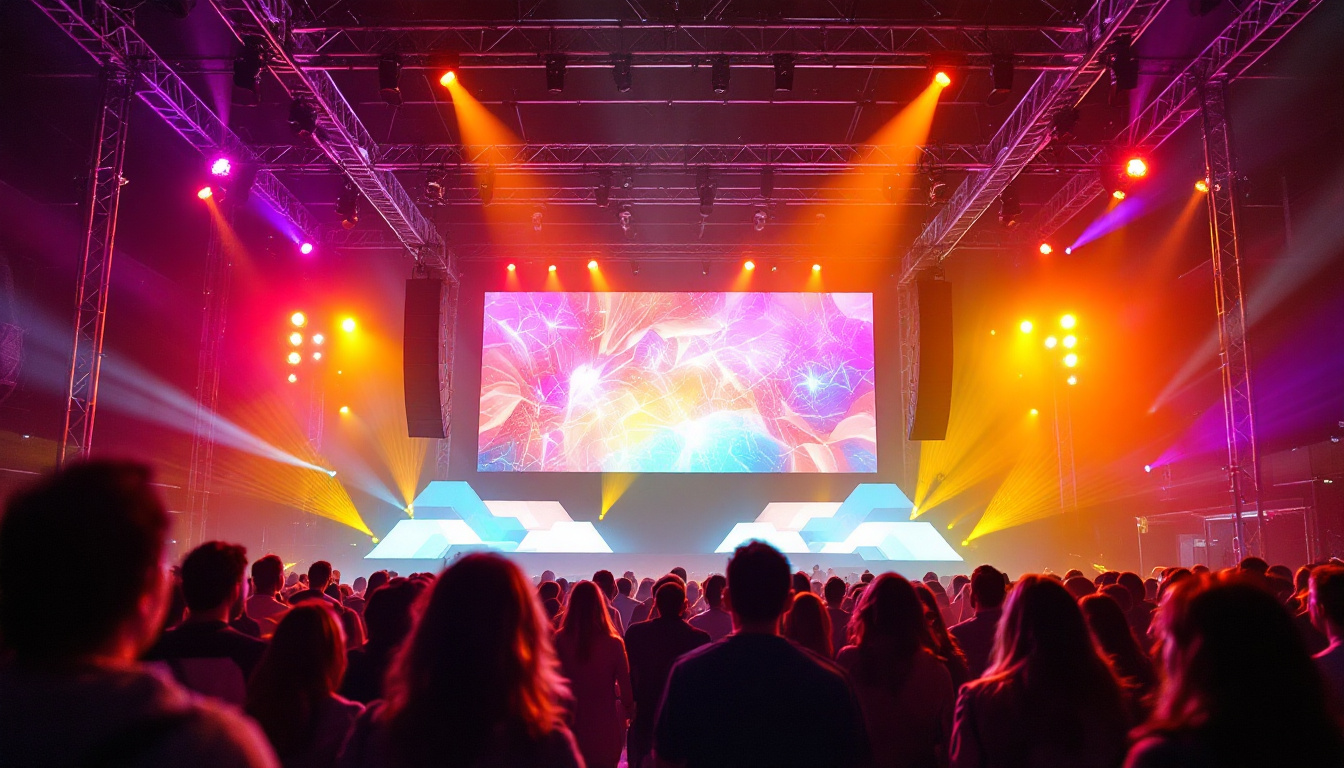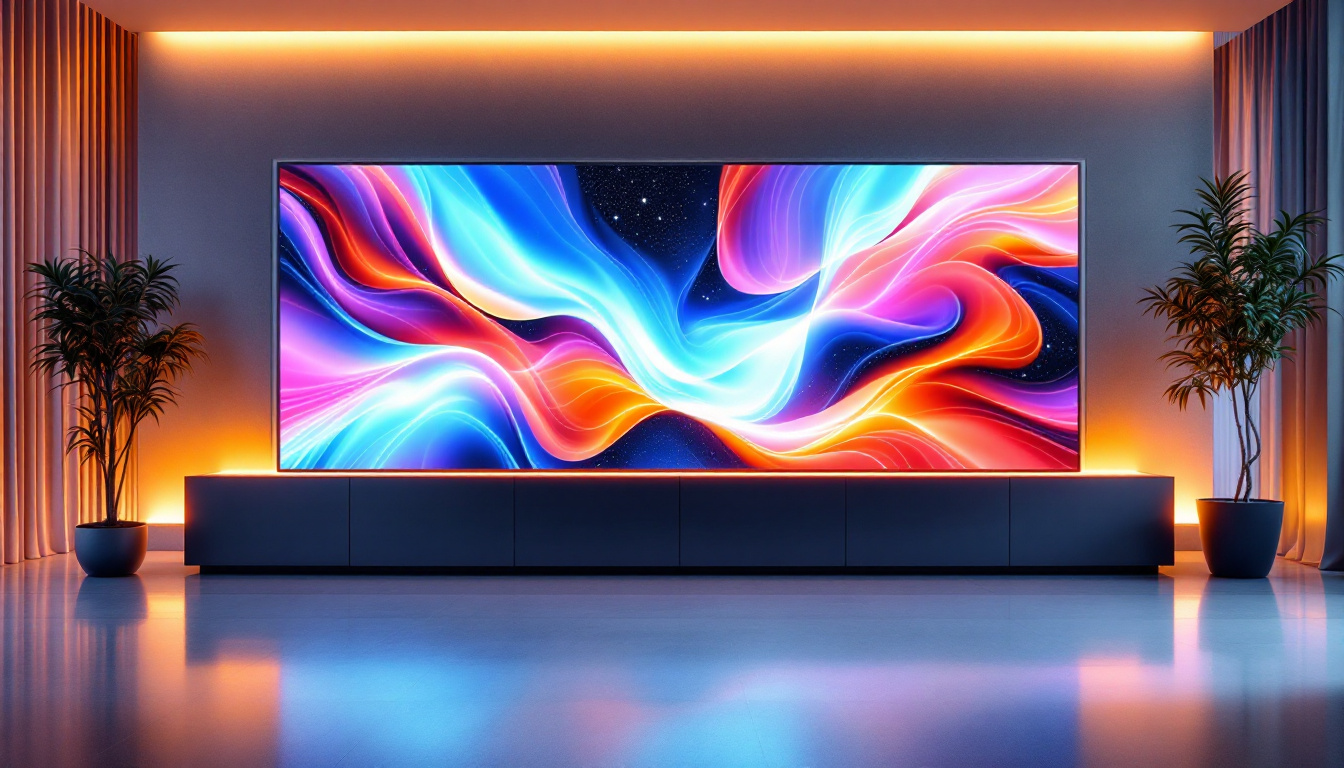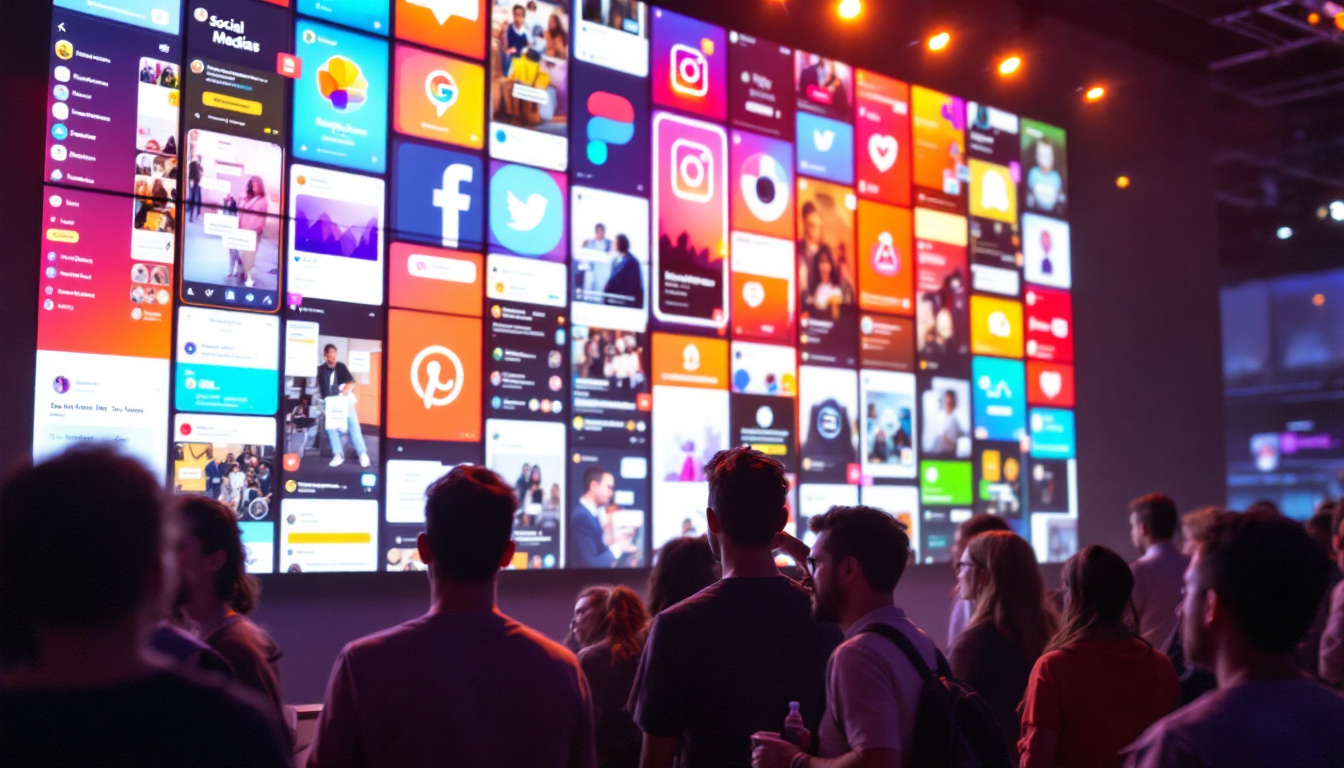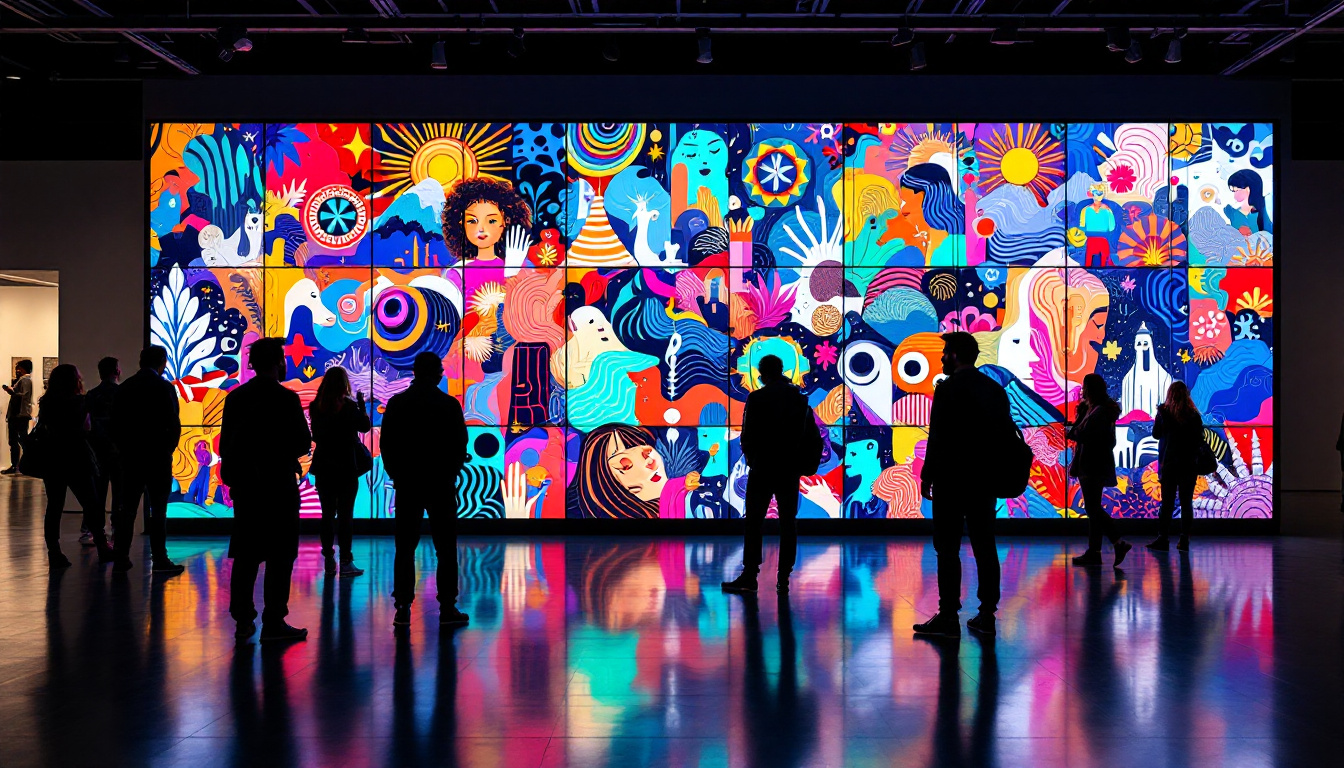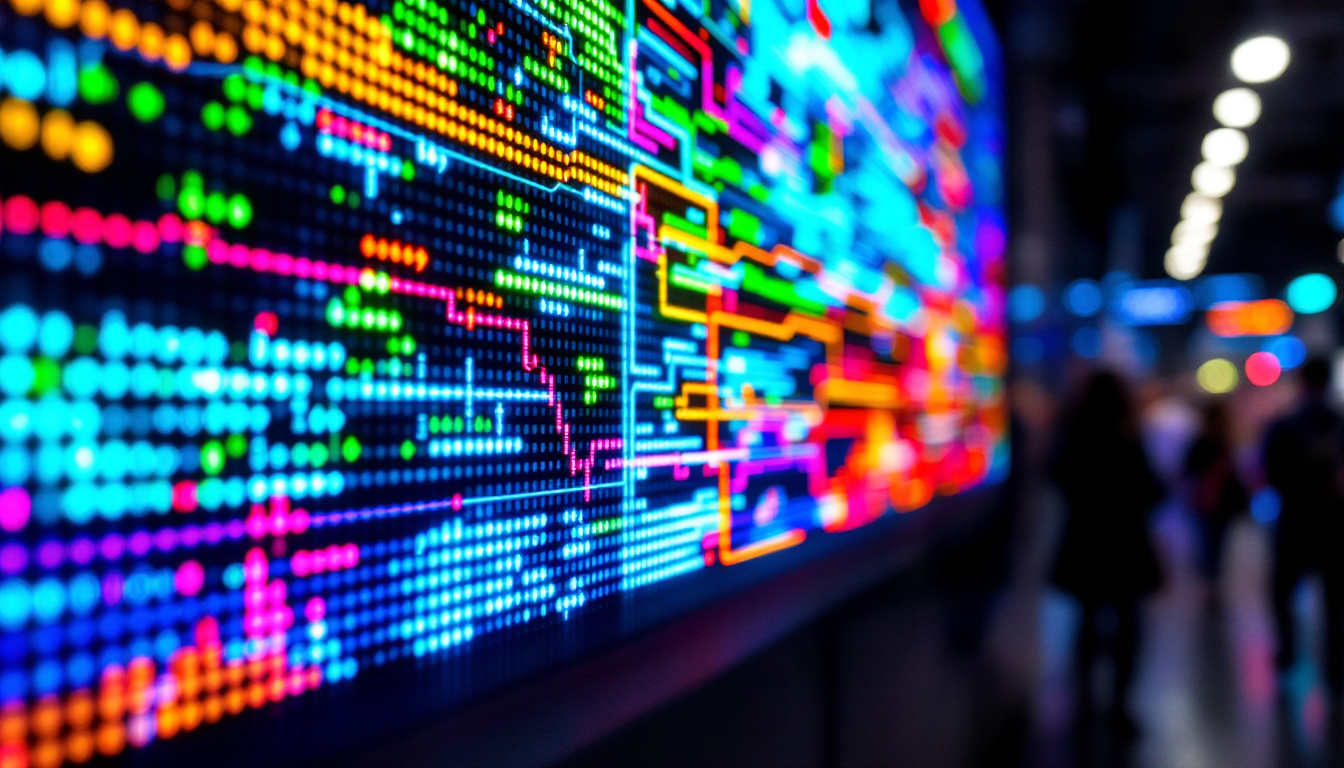In the ever-evolving world of technology, LED displays have become a cornerstone for visual communication. From billboards to television screens, the versatility and efficiency of LED technology have transformed how information is presented and consumed. This article delves into the intricacies of LED displays, exploring their functionality, types, and applications, while also addressing common misconceptions and future trends.
Understanding LED Technology
LED, or Light Emitting Diode, is a semiconductor device that emits light when an electric current passes through it. This technology has revolutionized the display industry due to its energy efficiency, longevity, and brightness. Unlike traditional incandescent bulbs, LEDs convert a higher percentage of electricity into light, making them a more sustainable option.
The Science Behind LEDs
The fundamental principle behind LED technology lies in electroluminescence. When electrons move through a semiconductor material, they recombine with holes, releasing energy in the form of photons. This process results in the vibrant colors and brightness associated with LED displays. The choice of semiconductor materials, such as gallium nitride or indium gallium phosphide, determines the color of the emitted light.
Furthermore, the construction of an LED display involves multiple layers, including the substrate, active layer, and encapsulation. Each layer plays a crucial role in ensuring optimal performance, durability, and heat dissipation, which is essential for maintaining the longevity of the display. The encapsulation layer, for instance, not only protects the delicate components from environmental factors but also enhances light extraction efficiency, allowing for brighter displays with less energy consumption.
Advantages of LED Displays
LED displays offer numerous advantages over traditional display technologies. One of the most significant benefits is their energy efficiency. LEDs consume significantly less power compared to LCD or plasma displays, making them an environmentally friendly choice.
Additionally, LED displays are known for their superior brightness and contrast ratios. This makes them ideal for outdoor applications where visibility in bright sunlight is crucial. The durability of LED technology also means that these displays can withstand harsh weather conditions, further enhancing their appeal for outdoor advertising and signage. Moreover, the compact size of LEDs allows for versatile design possibilities, enabling the creation of thin, lightweight displays that can be integrated into various environments, from retail spaces to stadiums.
Another noteworthy advantage of LED technology is its rapid response time. Unlike traditional displays that may suffer from motion blur, LEDs can switch on and off almost instantaneously, providing a clearer and more dynamic viewing experience. This characteristic is particularly beneficial in applications such as video walls and digital signage, where fast-paced content is frequently displayed. Furthermore, advancements in LED technology have led to the development of flexible and transparent displays, opening up new avenues for innovative design and functionality in the world of visual media.
Types of LED Displays
LED displays come in various types, each designed for specific applications. Understanding these types is essential for selecting the right display for a given purpose.
Direct View LED (DVLED)
Direct View LED displays consist of individual LED modules that create an image by emitting light directly to the viewer. These displays are often used in large-scale installations, such as stadiums and concert venues, where high brightness and large viewing distances are required.
DVLED displays are modular, allowing for flexible configurations and sizes. This adaptability makes them suitable for various applications, from advertising to artistic installations. The seamless integration of these modules ensures a uniform viewing experience, which is crucial for maintaining visual integrity.
LED Backlit LCD Displays
While not purely LED displays, LED backlit LCDs utilize LEDs to illuminate an LCD panel. This combination enhances the brightness and contrast of the image, providing a more vibrant viewing experience compared to traditional CCFL (cold cathode fluorescent lamp) backlighting.
LED backlit LCDs are widely used in televisions and computer monitors. They offer improved energy efficiency and thinner designs, making them a popular choice for consumers. However, they still rely on liquid crystal technology, which limits their performance in certain aspects compared to direct view LEDs.
Organic LED (OLED) Displays
Organic LED displays represent a significant advancement in display technology. Unlike traditional LEDs, OLEDs use organic compounds that emit light when an electric current is applied. This technology allows for thinner displays with better color accuracy and contrast ratios.
OLED displays are known for their ability to produce true blacks, as individual pixels can be turned off completely. This characteristic enhances the overall picture quality, making OLEDs a preferred choice for high-end televisions and mobile devices. However, they are generally more expensive to produce, which can limit their widespread adoption.
Applications of LED Displays
The versatility of LED displays has led to their adoption across various industries. From advertising to entertainment, the applications are vast and varied.
Advertising and Marketing
One of the most prominent applications of LED displays is in advertising. Digital billboards and signage utilize LED technology to capture the attention of passersby with vibrant colors and dynamic content. The ability to change advertisements in real-time allows businesses to target specific audiences and maximize their marketing efforts.
Moreover, the high brightness levels of LED displays make them effective for outdoor advertising, ensuring visibility even in direct sunlight. This adaptability has made LED displays a staple in urban environments, where competition for attention is fierce.
Entertainment and Events
In the entertainment industry, LED displays play a crucial role in enhancing audience experiences. Concerts, festivals, and sporting events often feature large LED screens that display live feeds, graphics, and animations. These displays create an immersive environment, engaging audiences and elevating the overall experience.
Additionally, LED technology is widely used in theaters and cinemas for both stage backdrops and screen displays. The ability to create stunning visuals with high contrast and vibrant colors enhances storytelling and captivates viewers.
Transportation and Public Information
LED displays are increasingly used in transportation systems for real-time information dissemination. Train stations, airports, and bus terminals utilize LED screens to provide travelers with updates on schedules, delays, and other essential information. The clarity and visibility of LED displays ensure that passengers can easily access the information they need.
Furthermore, LED technology is employed in traffic management systems, where dynamic message signs convey important messages to drivers. These displays can change in real-time to reflect current conditions, enhancing safety and efficiency on the roads.
Common Misconceptions About LED Displays
Despite their popularity, several misconceptions about LED displays persist. Addressing these misunderstandings is crucial for making informed decisions regarding their use.
LED Displays Are Only for Outdoor Use
While LED displays are indeed prevalent in outdoor settings, they are also highly effective for indoor applications. Indoor LED displays are designed with lower brightness levels and finer pixel pitches, making them suitable for environments such as retail spaces, conference rooms, and control centers.
These displays offer superior image quality and flexibility, allowing for creative installations that enhance the overall ambiance of a space. The versatility of LED technology means it can be tailored to meet the specific needs of various indoor environments.
LED Displays Are Too Expensive
While the initial investment for LED displays may be higher than traditional technologies, the long-term benefits often outweigh the costs. LED displays have a longer lifespan, lower energy consumption, and reduced maintenance requirements, leading to significant savings over time.
Additionally, the decreasing cost of LED technology due to advancements in manufacturing processes has made it more accessible for various applications. Businesses and organizations can now leverage the advantages of LED displays without breaking the bank.
All LED Displays Are the Same
Not all LED displays are created equal. Variations in pixel pitch, brightness levels, and color accuracy can significantly impact performance. Understanding the specific requirements of a project is essential for selecting the right display.
For instance, a high pixel pitch display may suffice for outdoor advertising, where viewing distances are greater. In contrast, a low pixel pitch display is necessary for indoor applications where viewers are closer to the screen. Evaluating the intended use and environment is crucial for making an informed choice.
The Future of LED Displays
The future of LED displays is promising, with ongoing advancements in technology and design. As industries continue to explore innovative applications, several trends are emerging.
MicroLED Technology
MicroLED technology represents the next frontier in display innovation. Comprising tiny individual LEDs, MicroLED displays offer exceptional brightness, color accuracy, and energy efficiency. The modular nature of MicroLED technology allows for seamless large-scale displays without the limitations of traditional panel designs.
This technology is expected to revolutionize the consumer electronics market, providing high-quality displays for televisions, smartphones, and wearable devices. As production processes improve, MicroLED displays may become more affordable and widely adopted.
Integration with Smart Technologies
As the Internet of Things (IoT) continues to expand, LED displays are increasingly being integrated with smart technologies. This integration allows for enhanced interactivity and personalization, creating more engaging experiences for users.
Smart LED displays can connect to various data sources, enabling real-time updates and dynamic content delivery. This capability is particularly beneficial for advertising and public information systems, where timely information is crucial.
Sustainability Initiatives
With growing awareness of environmental issues, the display industry is focusing on sustainability. LED technology is inherently more energy-efficient than traditional displays, but manufacturers are also exploring ways to reduce waste and improve recyclability.
Efforts to create eco-friendly materials and production processes are gaining traction, ensuring that the future of LED displays aligns with global sustainability goals. As consumers become more environmentally conscious, the demand for sustainable display solutions will likely increase.
Conclusion
LED displays have transformed the landscape of visual communication, offering unparalleled brightness, energy efficiency, and versatility. Understanding the technology behind LED displays, their various types, and applications is essential for making informed decisions in an increasingly digital world.
As advancements continue to shape the future of LED technology, businesses and consumers alike can expect even more innovative solutions that enhance their experiences. Embracing these developments will not only improve visual communication but also contribute to a more sustainable future.
Discover LumenMatrix’s Innovative LED Solutions
Ready to elevate your visual communication with cutting-edge LED technology? Look no further than LumenMatrix, a pioneer in creating dynamic and energy-efficient LED display modules. From captivating Indoor LED Walls to vibrant Outdoor Displays and beyond, LumenMatrix offers a diverse range of solutions tailored to meet your unique needs. Whether you’re looking to enhance brand visibility, engage audiences in sports arenas, or innovate with Custom and All-in-One LED Displays, our mission is to empower your message with clarity and impact. Check out LumenMatrix LED Display Solutions today and experience the revolution in digital signage and visual storytelling.

